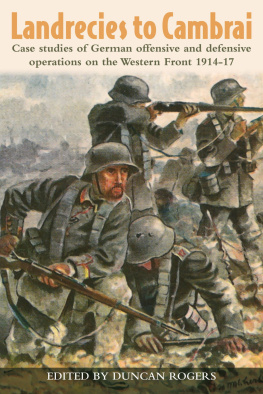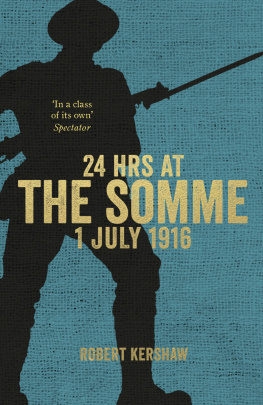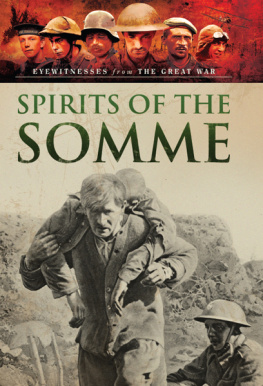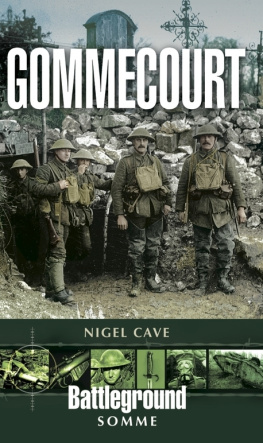
Fighting the Somme
To my beautiful granddaughter
Evelyn Rose Wesson (Evie)
With love and hope for the future.
By the same author:
The German Army on the Somme 1914 1916
The German Army at Passchendaele
The German Army on Vimy Ridge 1914 1917
The German Army at Cambrai
The German Army at Ypres 1914
The German Army on the Western Front 1915
The German Army in the Spring Offensives 1917
The Germans at Beaumont Hamel
The Germans at Thiepval
With Nigel Cave:
The Battle for Vimy Ridge 1917
Le Cateau
Ypres 1914: Langemarck
Ypres 1914: Messines
Ypres 1914: Menin Road
Fighting the Somme
German Challenges, Dilemmas and Solutions
Jack Sheldon
First published in Great Britain in 2017 by
Pen & Sword Military
an imprint of
Pen & Sword Books Ltd
47 Church Street
Barnsley
South Yorkshire
S70 2AS
Copyright Jack Sheldon 2017
ISBN 978 1 47388 199 0
eISBN 978 1 47388 201 0
Mobi ISBN 978 1 47388 200 3
The right of Jack Sheldon to be identified as the Author of this Work has been asserted by him in accordance with the Copyright, Designs and Patents Act 1988.
A CIP catalogue record for this book is available from the British Library
All rights reserved. No part of this book may be reproduced or transmitted in any form or by any means, electronic or mechanical including photocopying, recording or by any information storage and retrieval system, without permission from the Publisher in writing.
Pen & Sword Books Ltd incorporates the imprints of Pen & Sword Archaeology, Atlas, Aviation, Battleground, Discovery, Family History, History, Maritime, Military, Naval, Politics, Railways, Select, Transport, True Crime, Fiction, Frontline Books, Leo Cooper, Praetorian Press, Seaforth Publishing and Wharncliffe.
For a complete list of Pen & Sword titles please contact
PEN & SWORD BOOKS LIMITED
47 Church Street, Barnsley, South Yorkshire, S70 2AS, England
E-mail:
Website: www.pen-and-sword.co.uk
Introduction
I t is now over ten years since The German Army on the Somme 19141916 appeared; ten years in which extensive research in the surviving German archives has continued. These archives, especially the unweeded Kriegsarchiv in Munich, contain material in far larger quantities than is generally realised. This work has yielded a great deal of information that throws further light on a range of matters associated with the fighting in that region, particularly during the major 1916 offensive. This book is not meant to be read as a complete or even partial history of the Battle of the Somme 1916, nor is it a replacement for the earlier book, whose focus was on the tactical level. Rather, it is intended as an expansion of what was previously published, in particular as far as issues of command and control and the relationships between senior commanders and between commanders and the Great General Staff were concerned.
In other words, this is a study of several linked themes that help to explain why from the German perspective events unfolded as they did. To that end, it begins with an examination of the continuous thread which ran through German military theory and practice for one hundred years from the early part of the Nineteenth Century. This casts light on the influence of Clausewitz and the other Prussian reformers; explaining the crucial role played by the concept of the Schwerpunkt , why successive generations strived to bring about battles of annihilation and how the Great General Staff emerged as a dominant force within the army. All these matters are examined in detail in later chapters.
There is a natural human tendency to think that there is something inevitable about the way great events play out, but that was certainly not the case with this battle. Falkenhayn, who succeeded Moltke the Younger as chief of the general staff when the attempted war of annihilation against France failed on the Marne in autumn 1914, found himself thereafter forced to conduct a war of attrition on highly unfavourable terms. However, his obsession with Verdun in 1916 blinded him to the threat which was building up astride the Somme and almost led to catastrophe. Another man in charge could well have handled matters quite differently, so instead of the battle getting off to a terrible start for the German army and continuing in a hand to mouth way, the Allies might have been confronted by an initial check, followed by a massive counteroffensive with untold consequences.
In this context it is important to be aware of the scale of these potential operations as visualised by men such as Oberst von Loberg and General von Gallwitz when their proposals were put to Falkenhayn. Sixth Army, in planning a possible attack north and south of Arras in March 1916, for example, calmly requested reinforcements of 300 heavy batteries and ten corps [twenty divisions], so this would not have been a matter of the odd division here and there but, the Battle of Verdun halted, of the concentration of a huge force with genuine battlealtering ability. These men were bold, decisive and thought big. One of the natural consequences of this, of course, was the fact that they also had big egos, were highly opinionated and tended to be confrontational and dismissive of others.
In other words, they needed unambiguous, strong direction and a clear chain of command; but that is precisely what Falkenhayn did not provide when the expansion of the numbers of formations committed to the battle forced a division of command responsibility between a newly formed First Army under Below and a Second Army commanded by Gallwitz. Some sort of high level coordinating function was obviously needed but, shrinking from the creation of an army group headquarters and faced with a flat refusal by Gallwitz to be directed by Below, Falkenhayn appointed Gallwitz both commander Second Army and, simultaneously, of an Army Group Gallwitz. The arrangement was doomed from the start. Below, equally touchy, was insulted by the implied criticism of his ability and the two headquarters were at once at daggers drawn. Mutual suspicion, arguments, disputes, staff manoeuvrings and rows overshadowed the command and control of the battle dangerously for six critical weeks until 28 August when, not before time, Crown Prince Rupprecht was made the army group commander.
For this and a succession of other dubious judgement calls, Falkenhayn was replaced at the end of August by Hindenburg as chief of the general staff, with Ludendorff in the role of First Quartermaster General and de facto the man with executive control of the battle. Matters slowly began to improve, especially with regard to the air battle and provision of additional artillery, but it was by then impossible to change radically the way the battle was fought. Resources had to be provided for the war against Romania and the Battle of Verdun rumbled on, making it hard to maintain even minimum force levels, in particular of high grade troops, on the Somme front. A major part of the book is taken up, therefore, with an attempt to quantify, through exploitation of surviving primary sources, how great the strain on the German army really was, how close the Allies came to breakthrough, what the overall cost was and how, drawing on experiences gained during the battle, the German army prepared itself for the offensives they knew would occur in spring 1917.
Next page














